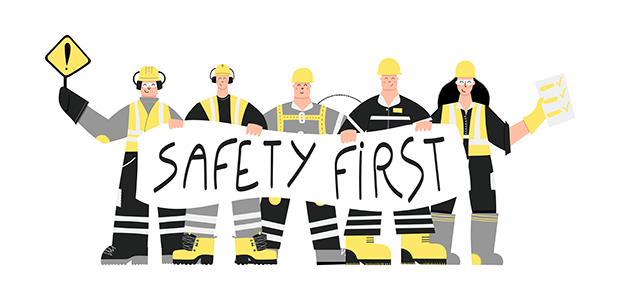
Smart safety wins for small businesses
The last few years brought on sweeping changes – and challenges – across workplaces, industries and for business leaders. Many SME leaders and entrepreneurs found their roles transformed as health and safety came to the fore of decision making processes.
Once only relevant to high risk industries, the issues championed by World Health and Safety Day at Work have become a priority for all. Today, companies recognise that safety is a key differentiator for retaining talent and boosting team performance. However, what this looks like can be very different depending on employees and roles.
Simply put, those on the frontline don’t have the same options available to them as desk-bound workers. Frontliners have no choice but to physically show up and adapt to their work environment. They make up 80% of the global workforce and are the backbone of businesses both big and small. Despite this, they’re rarely front of mind when it comes to appropriate tech. Just one percent of venture capital funding is invested in tooling for the frontline.
Prioritising frontline safety is more than just ticking a box, it lays a foundation that brings out the best in your team, your protocols and your outputs. Doing so doesn’t need to be complicated. Mobile-first technology can do some of the heavy lifting here. Here’s how entrepreneurs can make tech work for their frontline teams – for safety as well as quality.
Replace assumptions with visibility
Building a culture of safety starts with taking a good look at the procedures you have in place. One significant barrier to safety is assumption the biggest mistake we can make is assuming a process works or that a problem has been resolved.
Digitising your processes will remove assumptions and create pathways to increased visibility, something hugely valuable to time-poor SMEs. In enabling your frontline teams to report near misses, record incidents and request support through a mobile-first platform, you create a digital trail that maps the journey to resolution: no if’s, no buts.
With it comes the confidence that incidents are recorded immediately and rectified appropriately. This is especially crucial if your business employs lone workers. Take advantage of platforms powering real-time alerts in the case of red flags like missed check-ins and quick duress alarm activation for peace of mind.
Cultivate a culture of speaking up
Recent SafetyCulture research found that frontline workers fear being ignored or even losing their job for simply reporting workplace issues to management. Have you ever seen a small problem turn into a big one? It happens all too often. Small incidents can snowball into major safety issues if people don’t feel safe raising concerns and potential problems.
Whether you’re a startup or a more established business, the onus is on you to make sure employees are comfortable giving voice to any issues or feedback. Technology in this space is always evolving. For example, scannable QR codes that allow for anonymous issue reporting as they occur so that the right people can be notified and teams can feel empowered to speak up about potential issues.
Create a competence-confidence loop
Now that we’ve addressed day-to-day operations and workplace communication, it’s time to close the loop. The best way to turn a behaviour into a habit? Training and repetition. In the past, workplace training efforts were more concerned with compliance numbers than tangible learning outcomes. Now, the ability to deliver effective learning is critical.
As roles change and new safety measures arise, teams need to get up to speed quickly. Mobile-first, microlearning tools are increasingly important to helping businesses train their teams on compliance measures – as well as increase productivity and promote employee confidence. Rather than a set-and-forget approach, schedule training sessions at regular intervals upskilling a part of company culture.
A frontline workforce that leverages technology to have more power over their day-to-day work will be safer, more connected and more efficient. This will in turn benefit the whole organisation, and result in a more positive culture overall.

